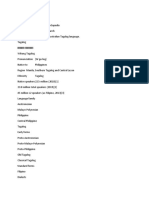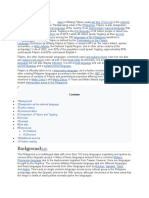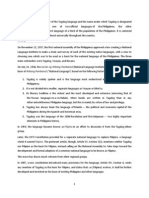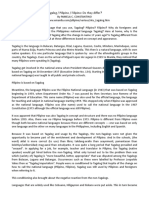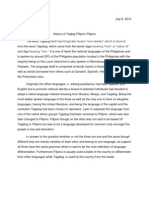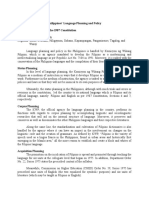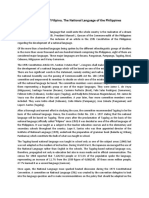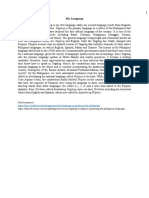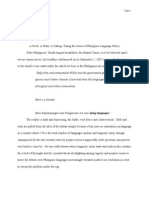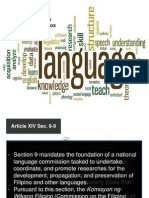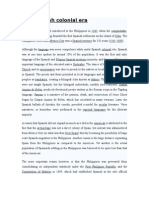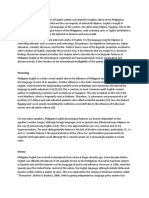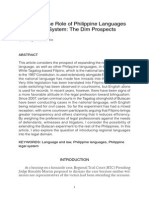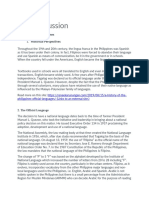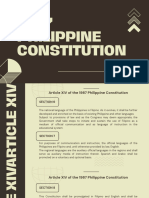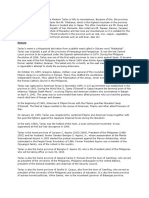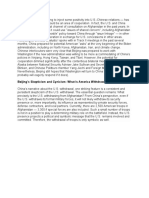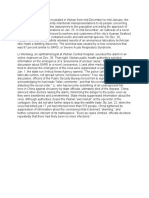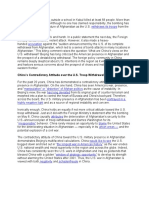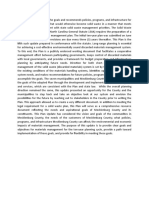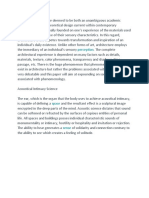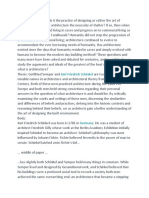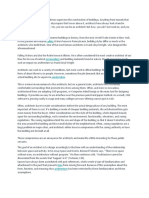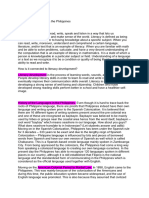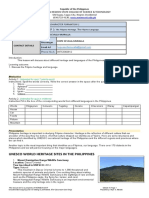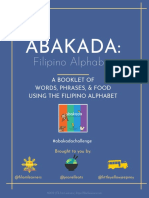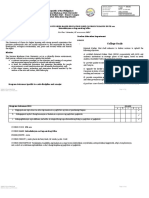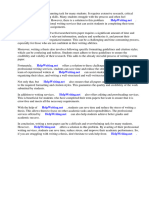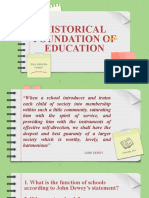0% found this document useful (0 votes)
61 views1 pageTagalog Ethnic Group Tagalogs Cebuanos: Innocencio V. Ferrer
- In 1959, the national language of the Philippines was changed from Tagalog to Pilipino to be more inclusive of non-Tagalog ethnic groups, though this did not satisfy all critics.
- In the 1960s, debates emerged around replacing foreign loanwords with new Filipino words and whether the national language should be more inclusive of other Philippine languages beyond Tagalog.
- The national language issue was revisited in constitutional conventions in the 1970s and 1980s, ultimately resulting in the designation of Filipino as the national language in 1987.
Uploaded by
hhii aasdasdCopyright
© © All Rights Reserved
We take content rights seriously. If you suspect this is your content, claim it here.
Available Formats
Download as DOC, PDF, TXT or read online on Scribd
0% found this document useful (0 votes)
61 views1 pageTagalog Ethnic Group Tagalogs Cebuanos: Innocencio V. Ferrer
- In 1959, the national language of the Philippines was changed from Tagalog to Pilipino to be more inclusive of non-Tagalog ethnic groups, though this did not satisfy all critics.
- In the 1960s, debates emerged around replacing foreign loanwords with new Filipino words and whether the national language should be more inclusive of other Philippine languages beyond Tagalog.
- The national language issue was revisited in constitutional conventions in the 1970s and 1980s, ultimately resulting in the designation of Filipino as the national language in 1987.
Uploaded by
hhii aasdasdCopyright
© © All Rights Reserved
We take content rights seriously. If you suspect this is your content, claim it here.
Available Formats
Download as DOC, PDF, TXT or read online on Scribd
/ 1
